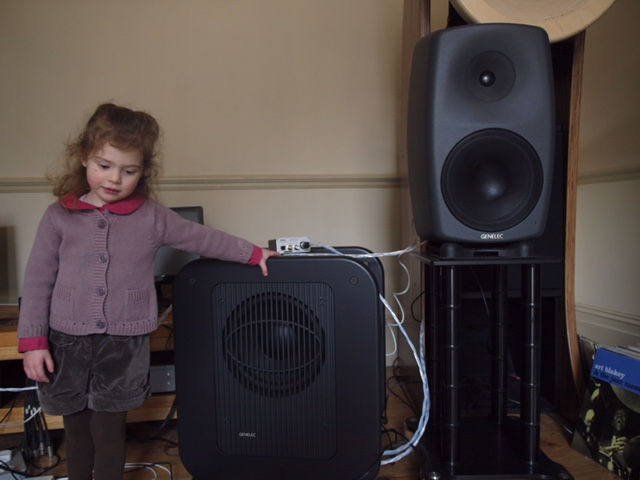The ten worst dacs ever made?
- Keith Cooper

- Feb 27, 2024
- 3 min read
This article really isn't about the ten worst dacs ever made, although that might be fun.
Amir of Audio Science Review recently measured a fairly expensive streamer/preamp with a comprehensive feature set.
The measured results were quite poor, there was power supply noise ( all measurements are taken at the outputs of the component) harmonic distortion and IMD ( intermodulation distortion) and relatively high levels of jitter.
The added noise and distortion mean that the unit barely realises the 96dB dynamic range ideally required to replay 44.1kHz CDs.
Stereophile's John Atkinson recently reviewed the latest version of the same component, and his findings were similar see plots below.
Below the ASR 50Hz into 600 Ohm plot,


Above Stereophile's 50Hz into 600 ohm measurement,
ASR and Stereophile's presentation of data is not quite the same, but Amir often replicates the Stereophile format for compatibility, you can see that both measurements show the same -90dB value at 100Hz.
I only post Stereophile's measurement because ASR is sometimes accused of manipulating data or some such nonsense, hopefully you will see that when the data is presented in the very same format, the measurements tally exactly.
If we then compare both of the above to the same measurement of a much less expensive but properly engineered Topping unit... we see a much improved -40dB lower noise floor.

ASR and Stereophile with the excellent John Atkinson who performs the measurement suite for their reviews have both published many examples of fundamentally poor engineering.
Amir just tells it as it is there is no sugar coating of the results, JA prefers a slightly more subtle delivery.
Poor design and implementation are manifold, manifesting in power supply noise, apparent in the 50-60Hz region, badly engineered inputs, or inputs with wildly differing quality of implementation, noise floor modulation, harmonic distortion, IMD (intermodulation distortion), channel imbalance, poorly designed reconstruction filters or none at all, the list goes on, enough in fact to make any serious engineer cry.
Personally I only want to reward really fine engineering so I tend to look at a components measurements if it measures poorly then I simply wouldn't even consider it.
BUT, the really important question in music reproduction is always, how much noise or distortion does a component have to add before we can actually hear that distortion, before it actually affects the component's audible performance?
When you start to look into it, it is really complex.
Threshold guidelines have been proposed for :-
Dynamic range,
CDs have a 16bit 96dB dynamic range, so electronic components 'should' be able to deliver 96db of dynamic range. Some components fall below this and yet some really fine measuring examples exceed 20 bits or 120dB.
Linearity, again some components do not remain linear for the full 96dB range .
Distortion:-
It has been proposed that distortion levels need to be below 0.05% -66DBFS ( in electrical components) to ensure they remain inaudible, but audibility of distortion depends upon so many factors, the type of distortion, the frequency, the signal used to 'mask' that distortion component, it is for example much more difficult to hear distortion when listening to music than say distortion played under a pure tone.
SINAD, groups distortion and noise into one figure, it does not entirely characterise a components performance but it is a useful metric.
Of all the dacs Amir has measured very few do not meet the -85dB proposed 'lenient' threshold, and no exhaustive analysis or proof exists that these proposed thresholds of audibility are either valid or immutable.
In terms of music reproduction what does it mean?

In this graphic the blue section contains the finest measuring dacs that Amir (ASR) has measured, as we track from left to right the measurements become progressively poorer, but the ear's relative insensitivity to distortion particularly outside the 1kHz-4kHz region and the masking effect of the musical programme we listen to may mean that the majority of listeners, unless they have been specifically trained to detect distortion will not be able to discern any audible difference between the majority of these dacs, even some of those in the 'poor' section.
It also might mean that a particular component that you have chosen because you enjoy its 'analogue' distortion has in reality no audible distortion artefacts whatsoever, it is in fact audibly transparent.
Ethan Winer's 'Artefact Audibility Comparisons', contains some WAV files you can download.
The files contain distortion elements, so you can experiment to discover your own thresholds of audibility.
Thanks to Amir at Audio Science Review,
John Atkinson and Stereophile and Ethan Winer.



https://ethanwiner.com/audibility.html works